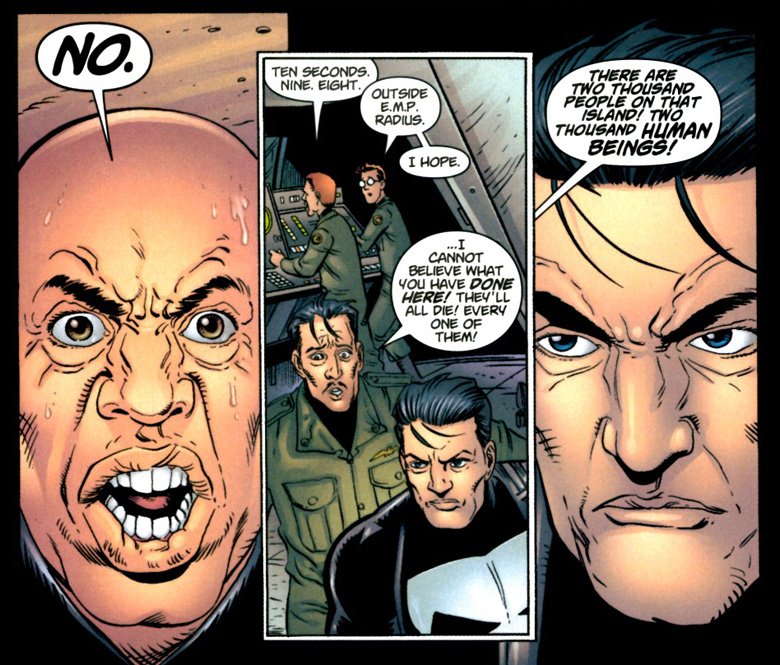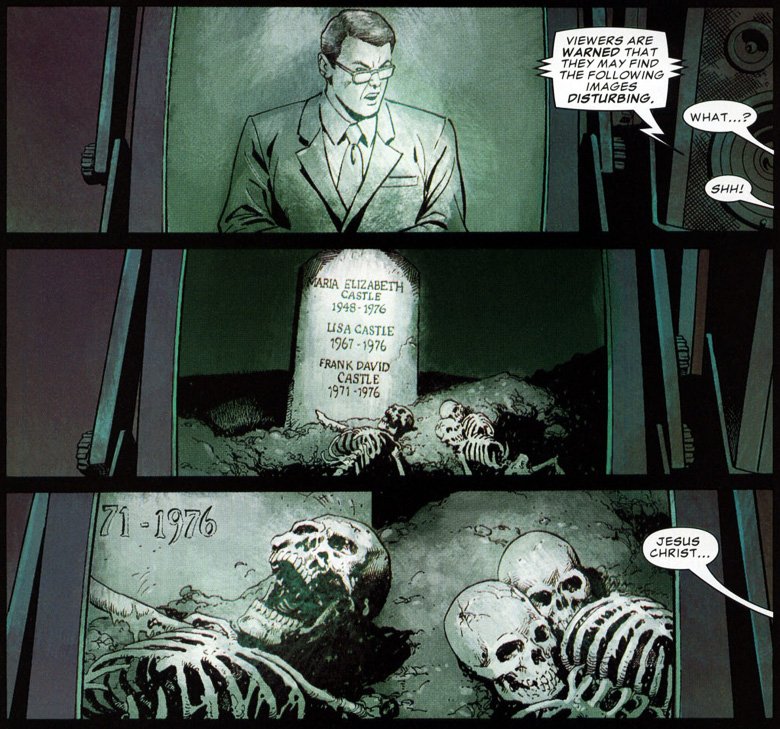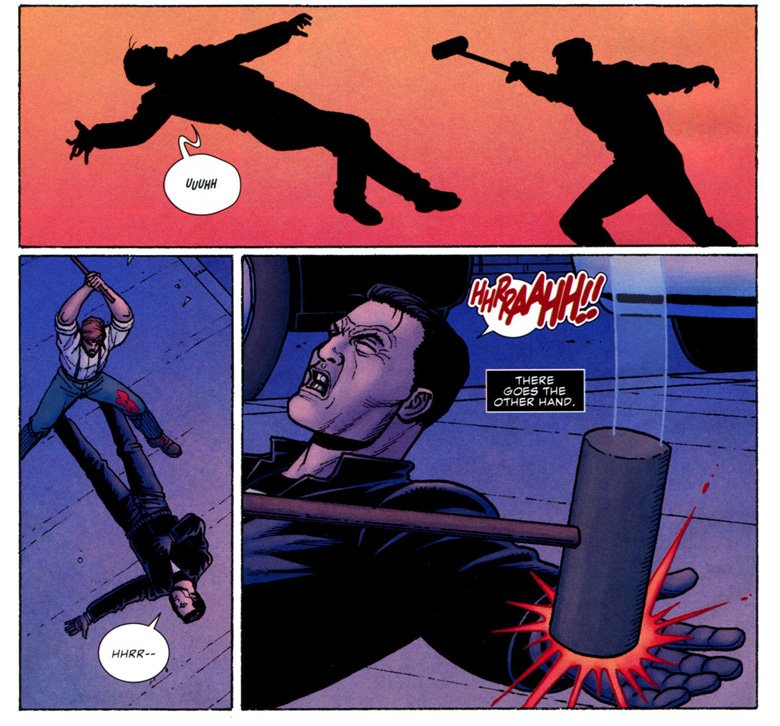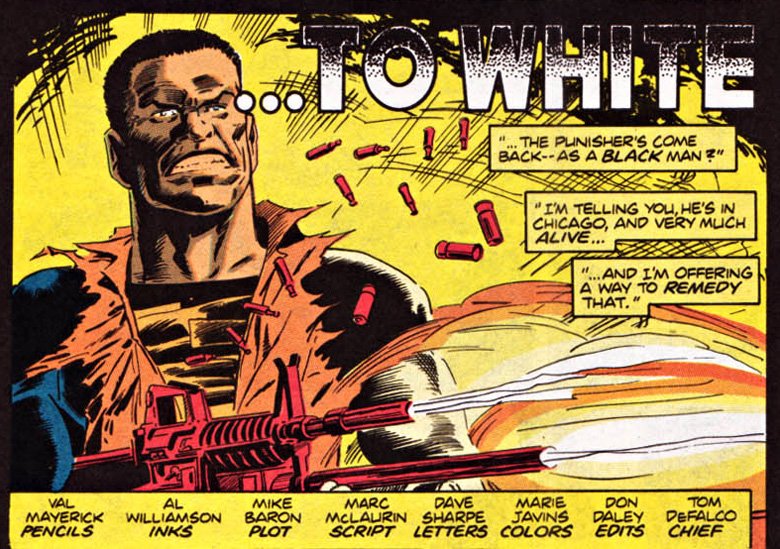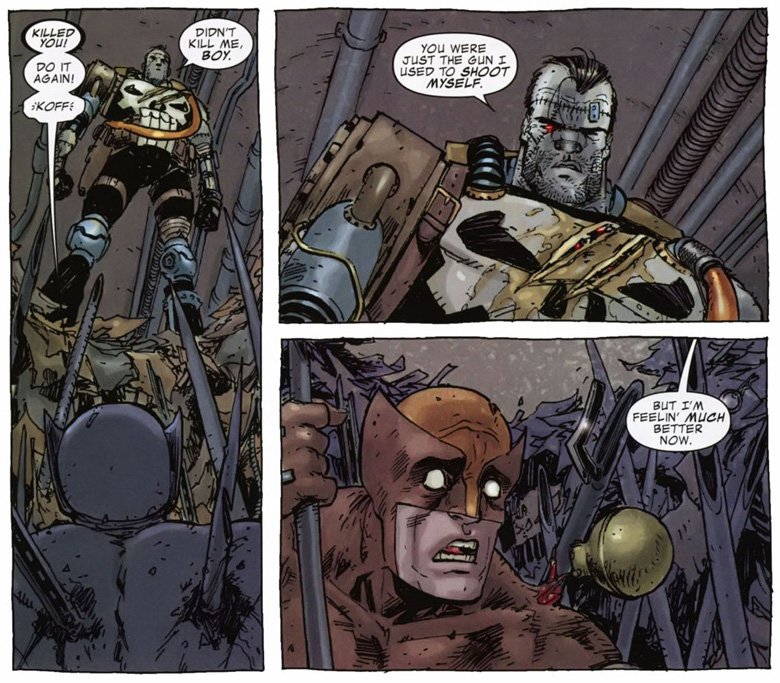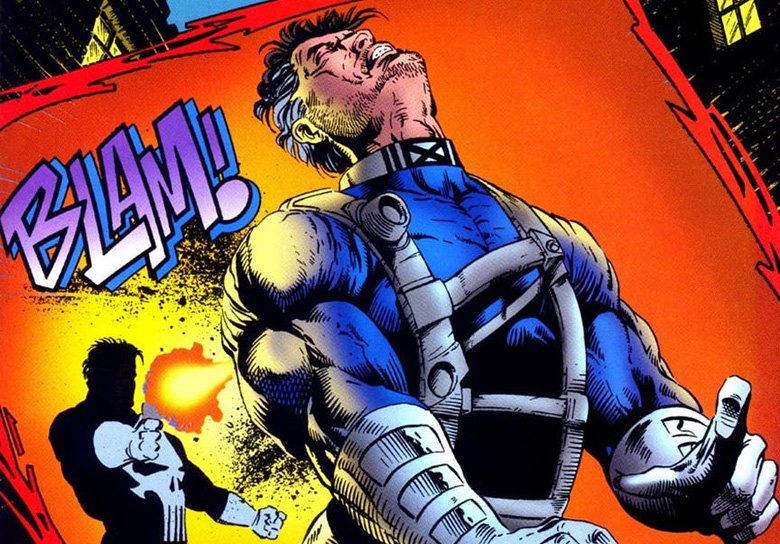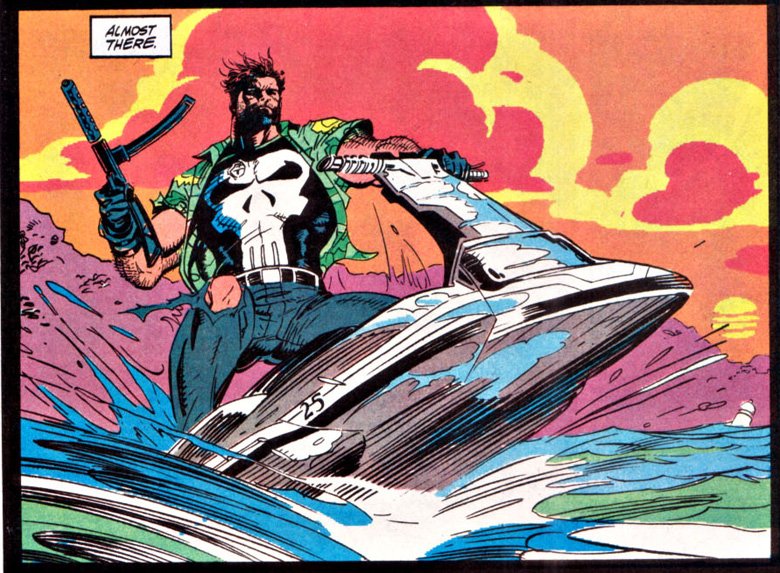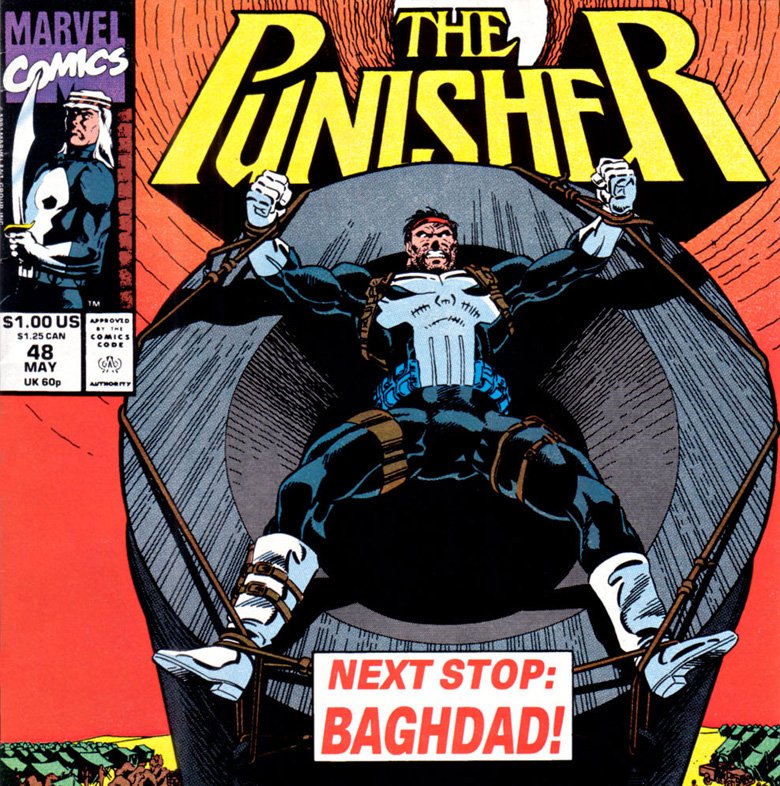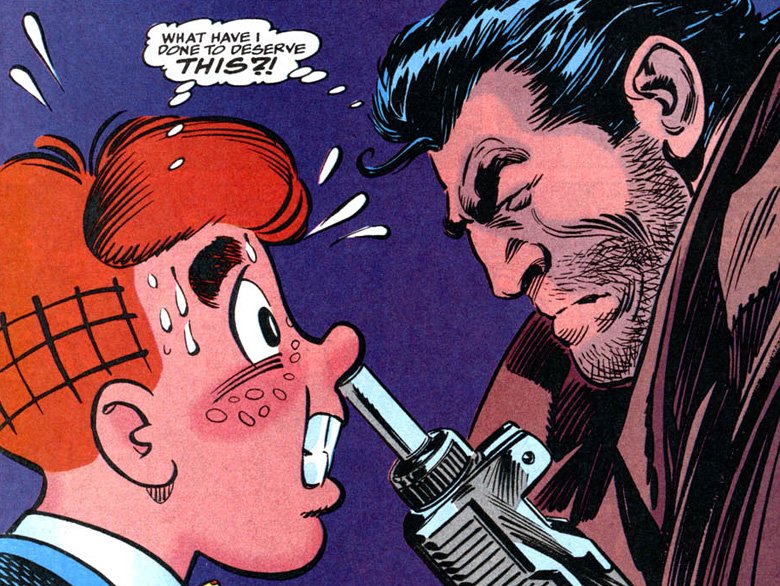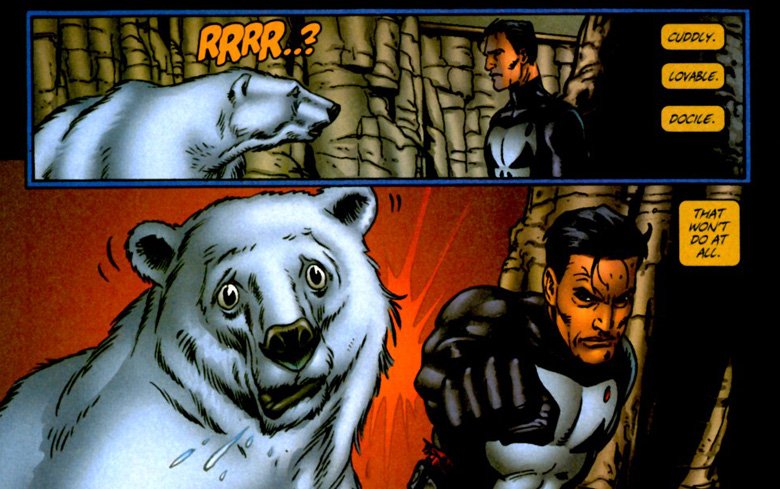Punisher Comic Book Moments Too Intense For Netflix
With shows like Daredevil and Jessica Jones, the Netflix roster of Marvel shows has already shown that they're capable of drawing some great moments from the comics and transferring them to the screen, and with Punisher, they're spoiled for choice. With hundreds of comics from his debut in the '70s to today to draw from, all built around hard-hitting ultra-violent action, there are plenty of brutal moments that are begging to be recreated. There's even a couple of fights in hallways, and you know the Netflix shows love that.
But while other heroes might've made the easy transition to dark, gritty storytelling, the Punisher brings a unique problem. As a gun-toting vigilante specializing in executing his enemies, there are plenty of stories that might just be too intense to work on the show—and more that are just intensely weird.
Army of One
It goes without saying that any media project involving Frank Castle is going to draw heavily from the eight-year run of Garth Ennis at the helm of the comics. In fact, they've already started—Finn Cooley, the antagonist of a story by Ennis and Leandro Fernandez called "Kitchen Irish," has already been killed on Daredevil, and there's been a pretty faithful recreation of the scene where Frank ties Daredevil up to witness a rooftop execution.
But over the course of those eight years, the Ennis run got into some pretty extreme stories, with Frank taking on everything from a gang of truly reprehensible human traffickers to a stomach-turning gross-out story about a necrophiliac cannibal who preyed on the homeless. In 2001, though, Ennis and Steve Dillon went full-on action movie for the story "Army of One" where the Punisher took on an entire island full of killer mercenaries who—in a bit of synchronicity that would seem eerily prophetic later that year—were planning to crash a hijacked 747 full of terrorists into a building.
Really, though, it's not the problem that's too extreme to include, it's Frank's solution. When confronted with an island containing over 2,000 murderers, mercenaries, and terrorists, the Punisher went for the nuclear option—literally. The story ends with a mushroom cloud when Frank drops an atomic weapon on the island, wiping it, and its population, off the face of the Earth.
Up is Down and Black is White
If "Army of One" was the story where Ennis went for the biggest, loudest climax that he could possibly produce, "Up is Down and Black is White" was the one where he made things personal.
In an effort to drive the Punisher to an anger so intense that he'd wind up making a fatal mistake—a strategy that fails to acknowledge the fact that Frank Castle is already as angry as humanly possible at all times—upstart mobster Nicky Cavella took a trip to Greenwood Cemetery to dig up Frank's wife and children, and then urinated on their bones. And just on the off chance that that wasn't enough, he recorded the whole thing on video and then sent it to major news outlets, ensuring that Frank would see it.
The flaw in this plan is pretty obvious, and as you might expect, the following five issues saw a rampage that was exceptionally violent even by Punisher standards. In the end, though, when it came time to take out Cavella himself, Frank simply drove him out to the woods and shot him in the gut, leaving him to a slow and painful death. Of all the entries on this list, this one's easily the most likely to show up on Netflix, but let's be real: a man pissing on a dead family's bones, including a couple of children? That's going to be a hard sell for the producers.
The Mennonite
Another signature of Ennis's lengthy run on The Punisher was pitting Frank Castle against enemies who seemed every bit as unstoppable as he was. One of them, Barracuda, proved popular enough that he eventually got a miniseries of his own, and the Russian—who made it to live action in the 2004 movie, where he was played by pro wrestler and Magic Mike star Kevin Nash—proved to be so resilient that it took a nuclear weapon to finally stop him.
Clearly, Ennis had set the bar pretty high for over-the-top action, but when he took over, Jason Aaron rose to the challenge. In their first arc, Aaron and Steve Dillon (also the co-creator of the Russian) introduced a new opponent: the Mennonite, a former hitman who had given up on violence to live a simple life alongside the Pennsylvania Dutch. If you're picturing an Amish John Wick, you've pretty much got it.
When he was called into action, he refused to use guns, forsaking modern technology and relying on the weapons his religion allowed, including a sledgehammer. The resulting fight is as brutal as anything that Dillon drew in his considerable career of working on comics where people get beaten to a pulp, and staging it like Jackie Chan meets Rocky would make for a pretty incredible fight scene, but we're going to go ahead and guess that we're probably not going to see the Punisher get run over by a horse-drawn wagon over the course of his Netflix show.
Crackdown
Considering that the Netflix shows have already had success introducing Luke Cage, it's easy to imagine that they might want to tie the Punisher into the rest of the universe by re-creating one of their classic team-ups—or at least, it's easy to imagine until you remember that their only notable team-up involves Frank Castle dyeing his skin brown and pretending to be a black man for three issues until it eventually fades back to his usual Caucasian complexion.
It happened in 1992's Punisher #59-61, in a story that actually marked the final arc for writer Mike Baron, who had been on the book since it launched five years earlier. Along with artists Hugh Haynes and Jimmy Palmiotti, Baron set things up with a story that feels like the most brutal series finale possible, with Frank Castle being sent to jail and having his face carved up by Jigsaw. They even kill his dog, Max, just to put the exclamation point on the end of Baron's tenure.
But then the book doesn't end. Instead, Baron and artist Val Mayerik are joined with a "script assist" by Marcus McLaurin to tell the tale of how Frank's face was repaired by a brilliant surgeon whose career was derailed by her addiction to heroin. Her experimental technique involved pumping the Punisher full of melanin, the pigment that determines skin color. The result was a dark-skinned Punisher who took a drive to Chicago to team up with Luke Cage and bring down a ring of crack dealers and their army of ninja henchmen. Needless to say, after three issues, everything went back to normal and this whole thing was never mentioned again.
FrankenCastle
As weird as it might've been even at the time, "Crackdown" isn't actually the weirdest transformation that the Punisher has ever had, and believe it or not, neither is the time that he was infamously resurrected as an angel who was tasked with shooting demons with magical ghost guns. No, the weirdest thing that ever happened to the Punisher was that time he was resurrected as a Frankenstein, and it's hard to imagine anything ever beating that.
The setup for this one was actually really great. In 2009, Marvel had only recently reintroduced the Punisher to the Marvel Universe proper, after a decade of keeping him contained in the mature readers MAX titles. The thing is, this also happened during the "Dark Reign" era, when notorious supervillain Norman Osborn—better known to Spider-Man fans as the Green Goblin—was put in charge of national security, replacing S.H.I.E.L.D. with the sinister H.A.M.M.E.R. Obviously, an unrepentant murderer in a position of power made for a tempting target, and Frank quickly set his sights on taking Osborn down, once and for all.
Unfortunately, at the end of the day, the Punisher is just a guy with a gun—okay, a lot of guns—and Osborn was surrounded by his own team of dark Avengers, who quickly moved to end the threat to their boss. Daken, the son of Wolverine, ended up chopping Frank to pieces and throwing his body into a sewer...where it was eventually found and stitched back together by Morbius the Living Vampire, who brought him back to life with the power of the mystical Bloodstone so that he could protect a secret city of monsters underneath Manhattan.
In the Marvel Universe of the comics, that's actually a pretty logical course of action. The shows, on the other hand, are probably not in a hurry to include Werewolf by Night and N'Kantu the Living Mummy, even if Jon Bernthal would look pretty great as a Frankenstein.
Punisher kills Nick Fury
If a crossover with Luke Cage is out of the question and they really wanted to tie Bernthal's version of the Punisher to the larger Marvel Cinematic Universe, they could always go with one of Frank's other big encounters with the MCU's most prominent characters. You know, like that time he got jacked up on psychotropic drugs and murdered Nick Fury.
It was actually the inciting incident of a comic book relaunch. At the height of his early '90s popularity, Frank was headlining three monthly titles—Punisher, War Journal, and War Zone—but when the industry contracted in 1995, all three were canceled after a six-part story to pave the way for a new relaunch. Before that, however, the Punisher was captured by S.H.I.E.L.D. and brainwashed by renegade agents into believing that it was actually Nick Fury who killed his family in Central Park, and became so convinced that he shot and killed the world's most famous S.H.I.E.L.D. agent. After a manhunt involving the Avengers and the murder of a second innocent family in the park—later revealed to have been committed by Bullseye—the Punisher was arrested and sentenced to death in the electric chair, a sentence carried out in the first issue of his next series.
As you might expect, Frank's death didn't really take, and neither did Nick Fury's. For Fury, whose best friends had a big laugh at his wake because they'd all died and come back at some point, it was later revealed that Tony Stark had invented a special Life Model Decoy robot that was completely indistinguishable from a regular human being. For Frank, it might even be weirder: after being rescued from the electric chair by a mafioso who wanted him to take over his organization, Frank actually agreed and joined up as the new head of an organized crime family. It might sound antithetical to the character, but it's actually better than it sounds—especially when you consider that the next relaunch was the one where he was an angel.
Frank Castle's crippling fear of open water
When you think of the Punisher, the words that come to mind tend to be along the lines of "violent," "brutal," "unstoppable," or "extremely furious." Very few readers would land on "absolutely terrified of the ocean," but, well, here we are.
In 1990's Punisher War Journal #17-19, Carl Potts and Jim Lee decided that it would be a good idea to give Frank a weakness in the form of a crippling phobia of open water, dating back to a childhood trauma—because what the Punisher really needed was a more traumatic past than the one he already had. It's the type of thing that was pretty easy to ignore until Frank found himself tracking down a gang of drug dealers to Hawaii, where it almost got him killed. Fortunately, he was rescued from drowning by a friendly dolphin and then conquered his fear with the help of a local kahuna who healed his spirit with magic at the request of a ninja master. No, really.
That entire sequence of events seems pretty unlikely to make it to the screen, but there are two things about this story that would be amazing to see in live-action. First, Frank Castle wearing a bright Hawaiian shirt over his Punisher costume. Second, some kind of recreation of the single greatest cover blurb of all time: "You just rented a jet-ski to the Punisher. KISS THAT BABY GOODBYE!"
The Brattle Gun
There are a lot of Punisher comics that could be described as "extreme," but few of those fit the definition quite as well as the one Mike Baron and Hugh Haynes told in the pages of Punisher #47 and 48, in which Frank Castle found himself strapped to the barrel of a 40-meter cannon that was primed to blow him to bits.
The cannon was the product of a weapons designer named Brattle who sold it to the fictional Middle Eastern country of Trafia for their war against the equally fictional Zukistan—and yes, the cover does advertise Frank being "caught in a desert storm," in case you had any doubts that this story hit shelves in 1991. In order to keep the Brattle Gun from being turned on other, less fictional countries, Frank took a trip to Trafia to sabotage it, and wound up being tied to the barrel right before they launched their opening salvo, giving a whole new meaning to the phrase "being held at gunpoint." And believe it or not, that's not the weird part.
No, the weird part is that he escapes by using a "diamond manicure" to cut through the ropes, and then takes a moment to paint his logo on his bare chest in axle grease from a nearby tank. Say what you will about Frank Castle's methods and how damaged he is as a human being, but we can all agree that he has an admirable level of commitment to his personal brand.
Punisher Meets Archie
If there's a hall of fame for bizarre comic book crossovers, then The Punisher Meets Archie is a first-round pick. Originally published by Marvel and Archie in 1994 with a script by Batton Lash and artwork by John Buscema and Stan Goldberg—a Marvel mainstay and a long-time Archie artist, respectively—it stands as one of the weirdest of all time, even after a decade of Archie meeting everyone from Barack Obama to the Predator to Sharknado. And the best part? It actually works beautifully as both a Punisher story and an Archie story.
But here's the thing: nowadays, it's actually even more appropriate than ever. With the Archie characters being reimagined with a darker take on TV's Riverdale—a show where the first season was based entirely around figuring out who murdered Jason Blossom by shooting him in the head—having Frank Castle roll up to lay down some vigilante justice wouldn't seem strange at all. Compared to how weird Riverdale gets, it would actually just feel like the logical next step before they got around to having Sabrina the Teenage Witch show up to invoke Great Cthulhu, or whatever their inevitable plans are for that.
Is it going to happen? No. But if we don't at least get a cameo appearance from K.J. Apa as a redheaded criminal on the run from the Punisher, then what are we even doing here?
Frank punches a polar bear
The fourth issue of Garth Ennis and Steve Dillon's Welcome Back Frank story is one of the best Punisher comics of all time for a lot of reasons. For one thing, it's got the undeniably cool setup of the Punisher being caught unprepared for a firefight and forced into a situation that's essentially Die Hard in a zoo. For another, it has one of the single greatest comic book panels ever printed: Frank Castle punching a polar bear in the face.
It's not just that it's a pretty viscerally hilarious blending of the Punisher's murderous brutality and Looney Tunes slapstick, it's that it actually sets off years of Punisher stories. See, the reason Frank slugs the bear isn't because it's some kind of polar bear criminal, it's to get it riled up so that it takes care of the actual crooks pursuing him. That ends up including Ma Gnucci, the hellacious mob boss serving as his antagonist for the entire story. When she takes on the polar bear, she ends up losing all of her limbs in the process, but survives to be the final boss of the story.
The thing is, it doesn't actually end there. When Ennis closed out his eight-year run on Punisher, he and Dillon reunited for a story where Ma Gnucci appeared to have clawed her way out of hell to get revenge on the Punisher. It turned out, however, that it was all a setup by the son of another villain from Welcome Back Frank: the Elite, a masked one-percenter who served as the living embodiment of privilege. It turned out that he was using his personal fortune to hire amputees, including veterans, and giving them plastic surgery to turn them into Ma's doppelgängers to mobilize the entire New York City mafia against Frank Castle. As far as this sort of plan goes, it's not bad, but it doesn't work any better for him than it did for anyone else.
